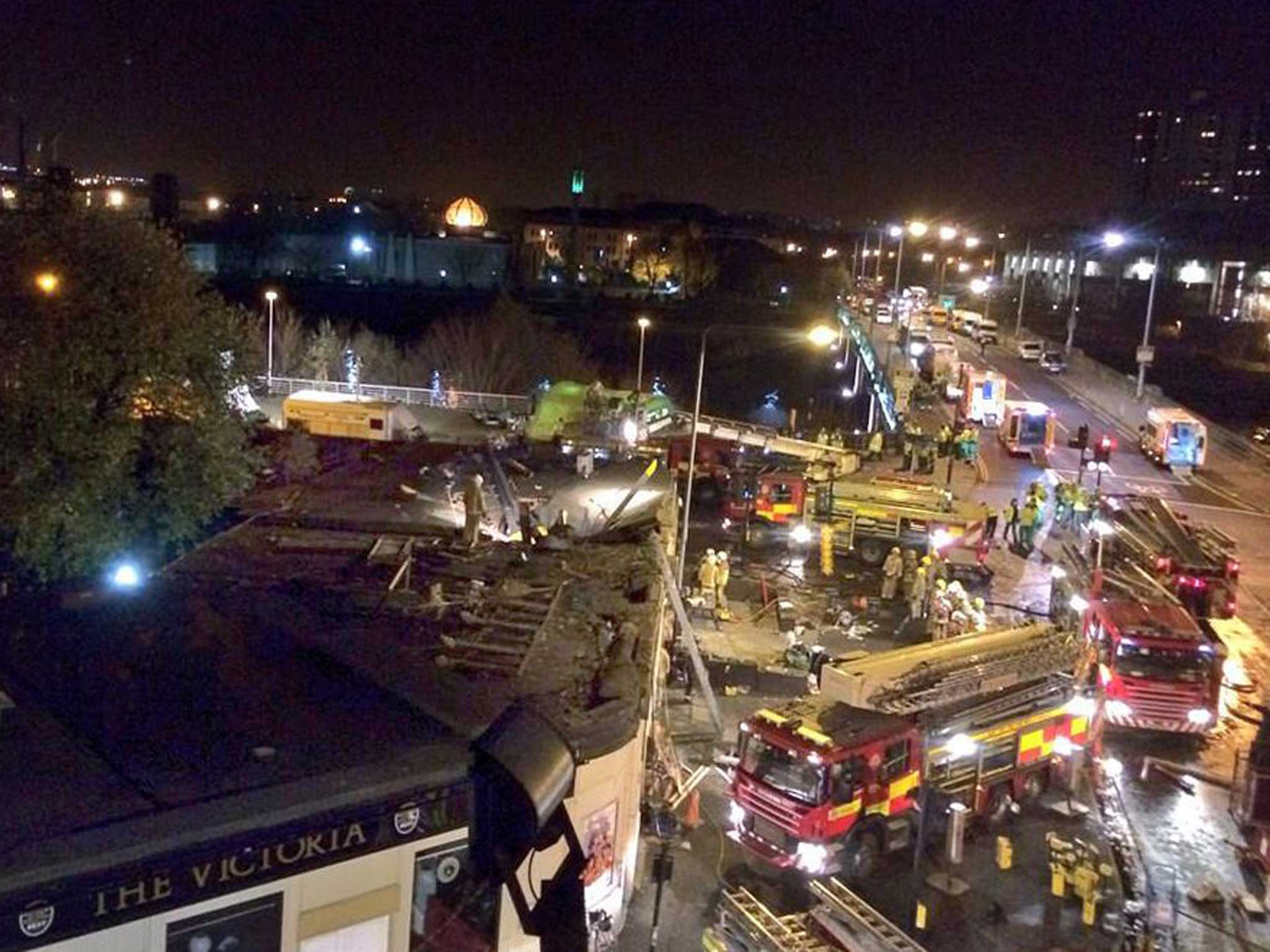Engine and gearbox of Glasgow pub crash police helicopter did not fail, investigators find
Special bulletin from Air Accidents Investigation Branch finds 'all significant components were present' at time of fatal crash

Your support helps us to tell the story
From reproductive rights to climate change to Big Tech, The Independent is on the ground when the story is developing. Whether it's investigating the financials of Elon Musk's pro-Trump PAC or producing our latest documentary, 'The A Word', which shines a light on the American women fighting for reproductive rights, we know how important it is to parse out the facts from the messaging.
At such a critical moment in US history, we need reporters on the ground. Your donation allows us to keep sending journalists to speak to both sides of the story.
The Independent is trusted by Americans across the entire political spectrum. And unlike many other quality news outlets, we choose not to lock Americans out of our reporting and analysis with paywalls. We believe quality journalism should be available to everyone, paid for by those who can afford it.
Your support makes all the difference.Initial reports from the investigation into the Clutha Vaults police helicopter crash suggest there is no evidence either the engine or the gear box of the aircraft failed.
Witnesses said they saw the helicopter “falling out of the sky” in Glasgow on 29 November before it landed on the pub during a busy gig night, killing nine people.
In a special bulletin from the Air Accidents Investigation Branch (AAIB), officials said “all significant components were present” at the time when the two-engined Eurocopter EC135 crashed through the roof of the bar.
The report said: “Initial assessment provided no evidence of major mechanical disruption of either engine and indicated that the main rotor gearbox was capable of providing drive from the No 2 engine turbine to the main rotor and to the fenestron drive shaft.”
While the AAIB has previously said it could take months before a full investigation can establish precisely what went wrong on the night of the crash, it today revealed details of the helicopter’s final movements.
It had left Glasgow City Heliport at 8.45pm on the Friday of the crash and had flown, to start with, to a location on the south side of Glasgow city centre, staying there for about 30 minutes at a height of 1,000ft above sea level.
It had then gone about 40 miles east to Dalkeith in Midlothian, staying there for a further 10 minutes before returning to Glasgow.
At 10.18pm the pilot had requested clearance from air traffic controllers to re-enter the Glasgow control zone and return to the heliport. This had been approved and no further radio transmissions from the pilot were received.
The AAIB added that radar contact with the helicopter was lost at 10.22pm.
Today’s report continued: “Around this time, the helicopter was seen and heard by a witness who described hearing a noise like a loud 'misfiring car', followed by silence.
“He then saw the helicopter descend rapidly. It crashed through the roof of The Clutha Bar, a single-storey building on Stockwell Street in central Glasgow.
“The three occupants of the helicopter and six people in, or adjacent to, the bar were fatally injured. Thirty two other people suffered injuries, 12 seriously.”
Additional reporting by PA
Join our commenting forum
Join thought-provoking conversations, follow other Independent readers and see their replies
Comments